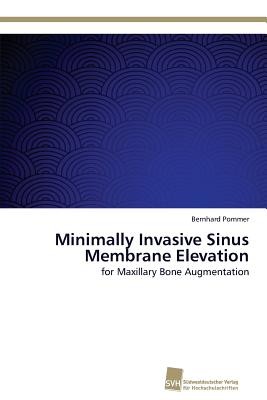
- We will send in 10–14 business days.
- Author: Bernhard Pommer
- Publisher: Sudwestdeutscher Verlag Fur Hochschulschriften AG
- ISBN-10: 3838136403
- ISBN-13: 9783838136400
- Format: 15.2 x 22.9 x 0.9 cm, minkšti viršeliai
- Language: English
- SAVE -10% with code: EXTRA
Reviews
Description
Transcrestal elevation of the maxillary sinus membrane provides a minimally invasive treatment option to augment bone volume for dental implant placement in the edentulous posterior maxilla. The present thesis details on surgical as well as preoperative planning procedures of an innovative technique to elevate the sinus membrane using gel pressure. The influence of internal sinus anatomy and biomechanical properties of the maxillary sinus membrane on maximum membrane elevation height is studied in human cadaver experiments and computed tomography-based analyses. Maxillary sinus septa and primary stability of simultaneously placed implants are investigated. Clinical study results on methods of transcrestal osteotomy and bone regeneration following maxillary sinus floor augmentation are presented.
EXTRA 10 % discount with code: EXTRA
The promotion ends in 22d.02:48:45
The discount code is valid when purchasing from 10 €. Discounts do not stack.
- Author: Bernhard Pommer
- Publisher: Sudwestdeutscher Verlag Fur Hochschulschriften AG
- ISBN-10: 3838136403
- ISBN-13: 9783838136400
- Format: 15.2 x 22.9 x 0.9 cm, minkšti viršeliai
- Language: English English
Transcrestal elevation of the maxillary sinus membrane provides a minimally invasive treatment option to augment bone volume for dental implant placement in the edentulous posterior maxilla. The present thesis details on surgical as well as preoperative planning procedures of an innovative technique to elevate the sinus membrane using gel pressure. The influence of internal sinus anatomy and biomechanical properties of the maxillary sinus membrane on maximum membrane elevation height is studied in human cadaver experiments and computed tomography-based analyses. Maxillary sinus septa and primary stability of simultaneously placed implants are investigated. Clinical study results on methods of transcrestal osteotomy and bone regeneration following maxillary sinus floor augmentation are presented.


Reviews